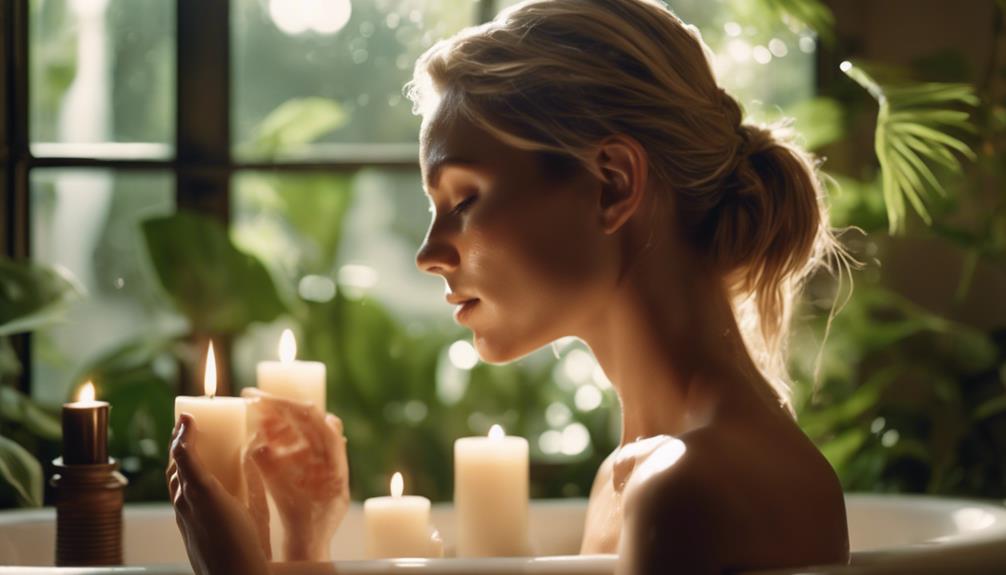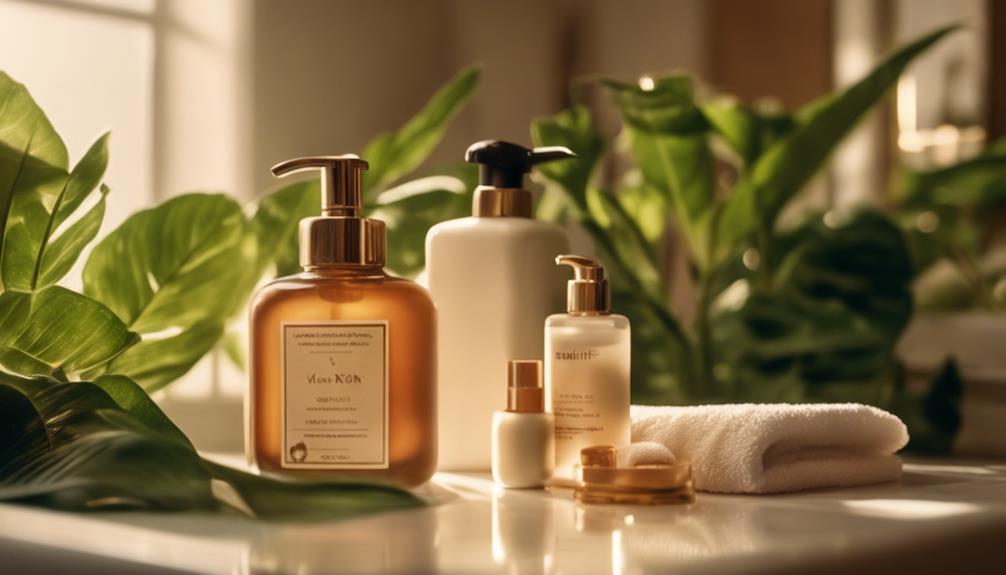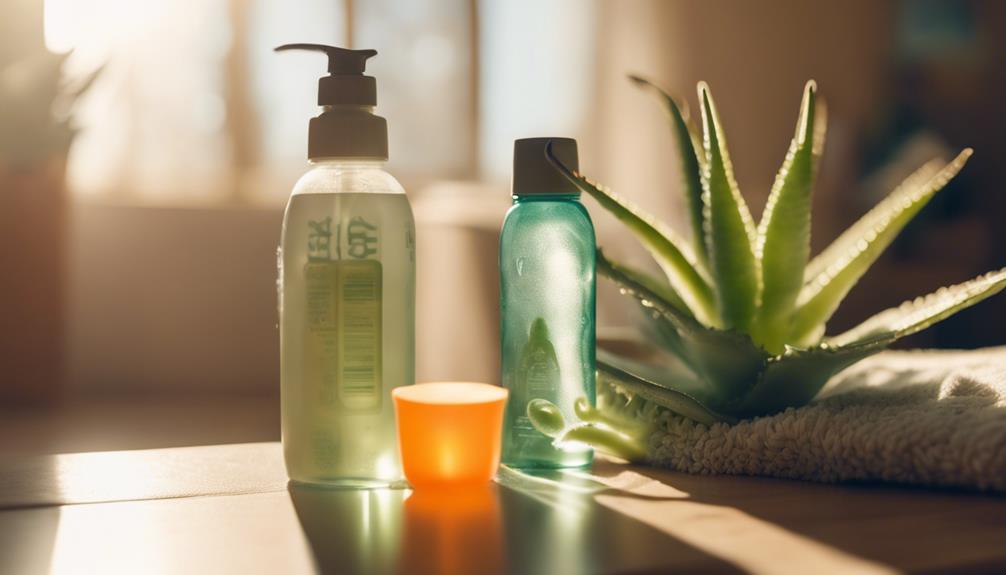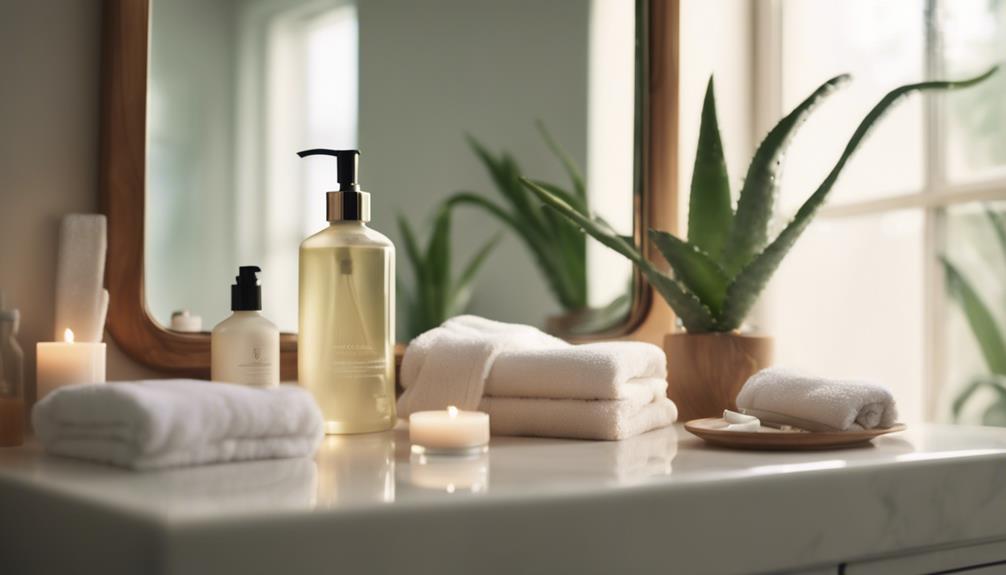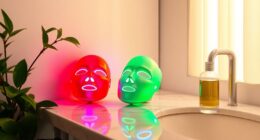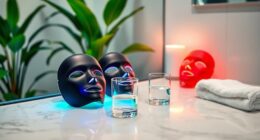To reveal radiant skin before tanning, hydration is essential. Hydrated skin absorbs tanning products better, preventing patchy spots and ensuring an even, long-lasting glow. Start by cleansing and exfoliating your skin to remove impurities. Follow up with an oil-free moisturizer to maintain suppleness and enhance product absorption. Don't forget to protect your lips with an SPF lip balm. This prep routine not only minimizes irritation but also boosts your tanning results. By keeping your skin hydrated, you set the stage for a stunning tan. Stick around for tips on maintaining that radiant look after you're done!
Key Takeaways
- Hydrated skin absorbs tanning products better, leading to a more even and long-lasting tan.
- Moisturizing creates a protective barrier, enhancing skin health and minimizing irritation during tanning.
- Exfoliating before tanning removes dead skin cells, allowing for improved product absorption and a smoother finish.
- Using oil-free moisturizers maintains skin suppleness without clogging pores, promoting better tanning results.
Importance of Hydration
Staying hydrated before tanning is essential for achieving an even and long-lasting glow on your skin.
When your skin's well-hydrated, it absorbs tanning products more effectively, enhancing your overall results. You'll notice that hydrated skin feels refreshed, making it easier to achieve that rich, uniform tan you desire.
Plus, proper hydration prevents patchy spots and uneven tan lines, giving you a smooth canvas for your tanning lotion.
Additionally, drinking enough water and moisturizing helps maintain skin integrity, reducing the risk of irritation during tanning sessions.
Benefits of Moisturizing
Moisturizing your skin before tanning not only sets the stage for an even, glowy tan but also creates a protective barrier that enhances smoothness and overall skin health.
When you hydrate your skin, you improve its texture, making it more receptive to tanning products. This means you'll achieve a richer, longer-lasting tan while minimizing the risk of irritation.
Plus, using an oil-free moisturizer guarantees that your skin remains supple without interfering with tan absorption.
Don't forget your lips; applying lip balm protects them from UV damage, completing your pre-tan routine.
Hydrated skin not only looks better but feels better, so make moisturizing a key part of your tanning preparation for best results.
Skin Preparation Steps
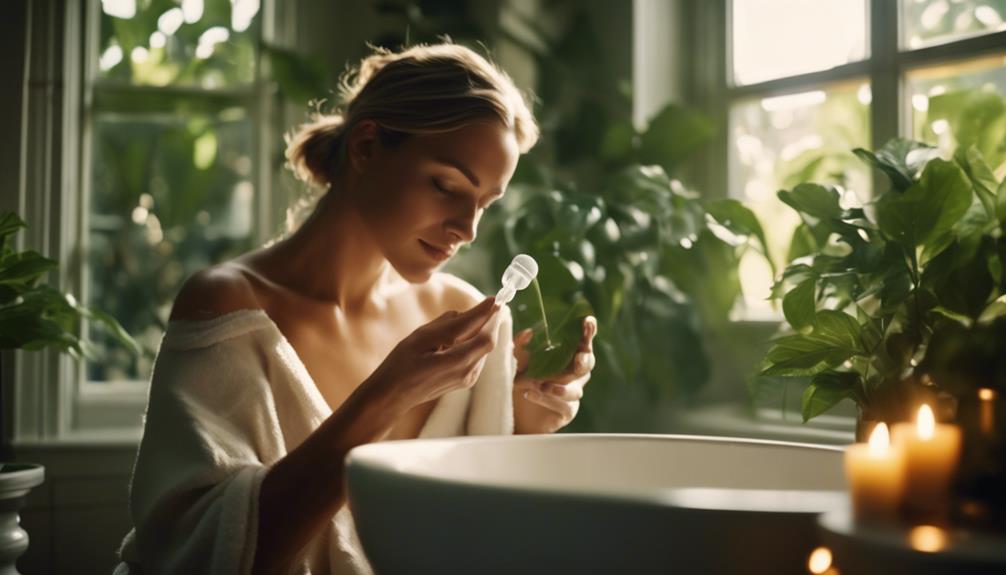
Preparing your skin properly before tanning is key to achieving that flawless, sun-kissed glow you desire.
Start by cleansing your skin to remove any makeup and impurities, guaranteeing a clean slate.
Next, exfoliate to eliminate dead skin cells, which allows for better absorption of tanning products.
After exfoliating, apply an oil-free moisturizer to keep your skin supple and enhance the tanning process.
If you're looking for quicker results, consider using tanning accelerators.
Don't forget to protect your lips with an SPF lip balm to prevent UV damage.
Finally, remember to remove any jewelry before tanning to avoid irritation and guarantee even coverage.
Following these steps will help you achieve a smooth, radiant tan.
Choosing the Right Moisturizer
Selecting the right moisturizer is essential for ensuring your skin absorbs tanning products effectively and achieves a lasting glow. When choosing a moisturizer, you'll want to evaluate oil-free formulas that enhance skin breathability. Look for hydrating ingredients that lock in moisture, providing ideal skin health.
Here's a quick comparison to help you decide:
| Moisturizer Type | Benefits |
|---|---|
| Oil-Free | Promotes tan absorption |
| Hydrating Cream | Locks in moisture |
| Tanning Accelerator | Enhances glow |
| Tan Extender | Prolongs sun-kissed appearance |
Pre-Tanning Bed Precautions
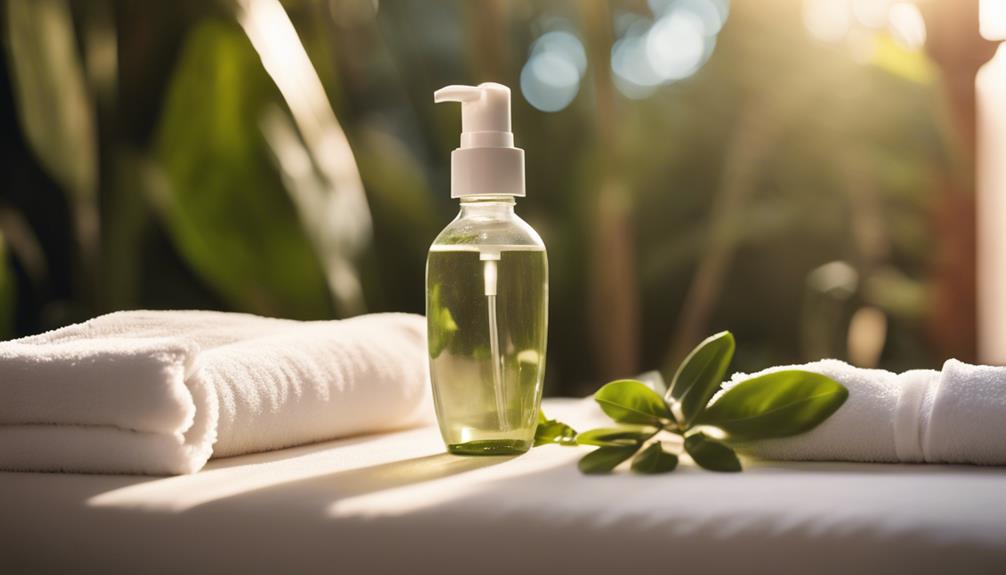
Before stepping into the tanning bed, it's important to take specific precautions to guarantee a safe and effective tanning experience.
First, remove any makeup and jewelry to prevent irritation and secure an even tan. Avoid shaving right before your session, as this can lead to redness and discomfort.
Always wear protective goggles to shield your eyes from harmful UV rays. Skip scented lotions and beach products, as these can irritate your skin; stick to products designed for indoor tanning instead.
Tanning Product Recommendations
To achieve the best results from your tanning session, choose high-quality products specifically designed for indoor tanning. Look for oil-free moisturizers that hydrate without clogging your pores. These will help your skin stay supple and allow for better absorption of the tanning products.
Consider using tanning accelerators to enhance your glow and tan extenders to prolong your sun-kissed appearance. Make sure to cleanse and exfoliate your skin beforehand, as this will create a smooth canvas for the tanning products.
Don't forget to protect your lips with SPF lip balm to prevent UV damage. Always consult with skincare professionals for personalized recommendations that cater to your skin type and tanning goals for maximum results.
Maintaining Hydration Post-Tan
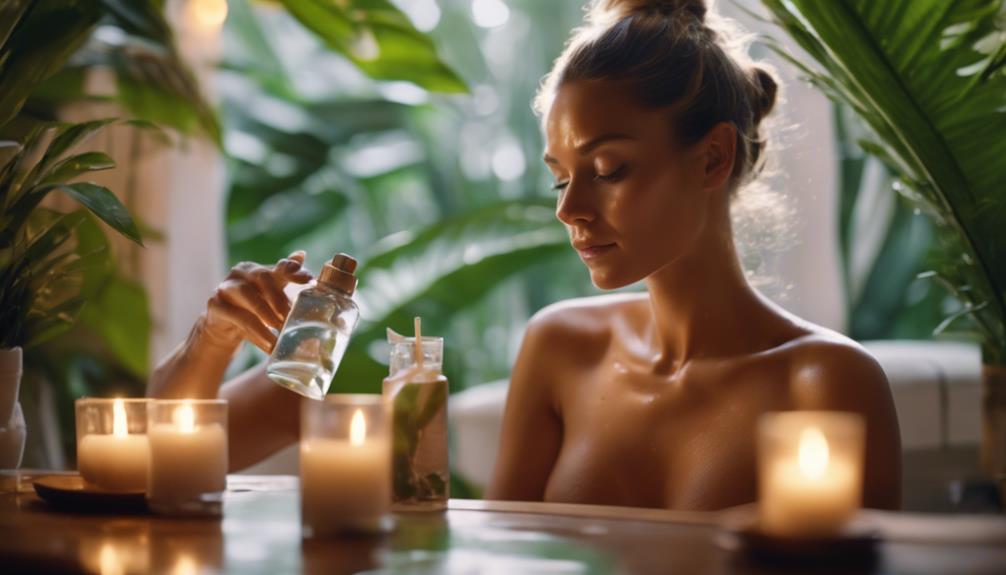
Maintaining hydration after tanning is essential for preserving your tan and keeping your skin healthy. After your tanning session, your skin can become dry, leading to fading and uneven color.
To counteract this, apply a rich, oil-free moisturizer immediately. This helps lock in moisture and enhances your tan's longevity. Drink plenty of water throughout the day to keep your skin hydrated from the inside out.
Avoid hot showers and harsh soaps, as they can strip moisture and fade your tan faster. Instead, opt for gentle cleansers and lukewarm water.
Frequently Asked Questions
How Soon Before Tanning Should I Hydrate My Skin?
You should hydrate your skin at least 24 hours before tanning. This guarantees your skin is fully moisturized, allowing for an even, long-lasting tan while preventing patchiness and enhancing overall tan absorption.
Can I Use Self-Tanner Instead of Traditional Tanning Methods?
Sure, you can use self-tanner instead of traditional methods. It's amusing how people think sun exposure gives a better tan, when self-tanners offer a safer, customizable glow without UV damage. You'll love the results!
Is It Safe to Tan With a Sunburn?
Tanning with a sunburn isn't safe. You risk worsening the burn and increasing skin damage. Instead, let your skin heal completely before tanning to guarantee a healthier, more even tan later on.
How Often Should I Moisturize My Skin Post-Tan?
You might think moisturizing's unnecessary after tanning, but it's essential. Moisturize daily to maintain your glow and combat dryness. Picture your skin as a sponge—it absorbs moisture, keeping it soft, smooth, and radiant.
What Foods Can Help Improve Skin Hydration?
To improve skin hydration, you should eat foods rich in water, like cucumbers, watermelon, and oranges. Incorporating nuts and avocados also provides healthy fats, helping your skin retain moisture and stay supple.
Conclusion
By prioritizing hydration, you're paving the way for a stunning tan that glows like the sun at dawn.
Moisturizing your skin not only enhances your tanning experience but also protects it from damage and guarantees an even application.
Remember, a little preparation goes a long way.
So, hydrate, choose the right products, and enjoy your sun-kissed complexion with confidence.
Embrace your glow and let your radiant skin shine bright all season long!
